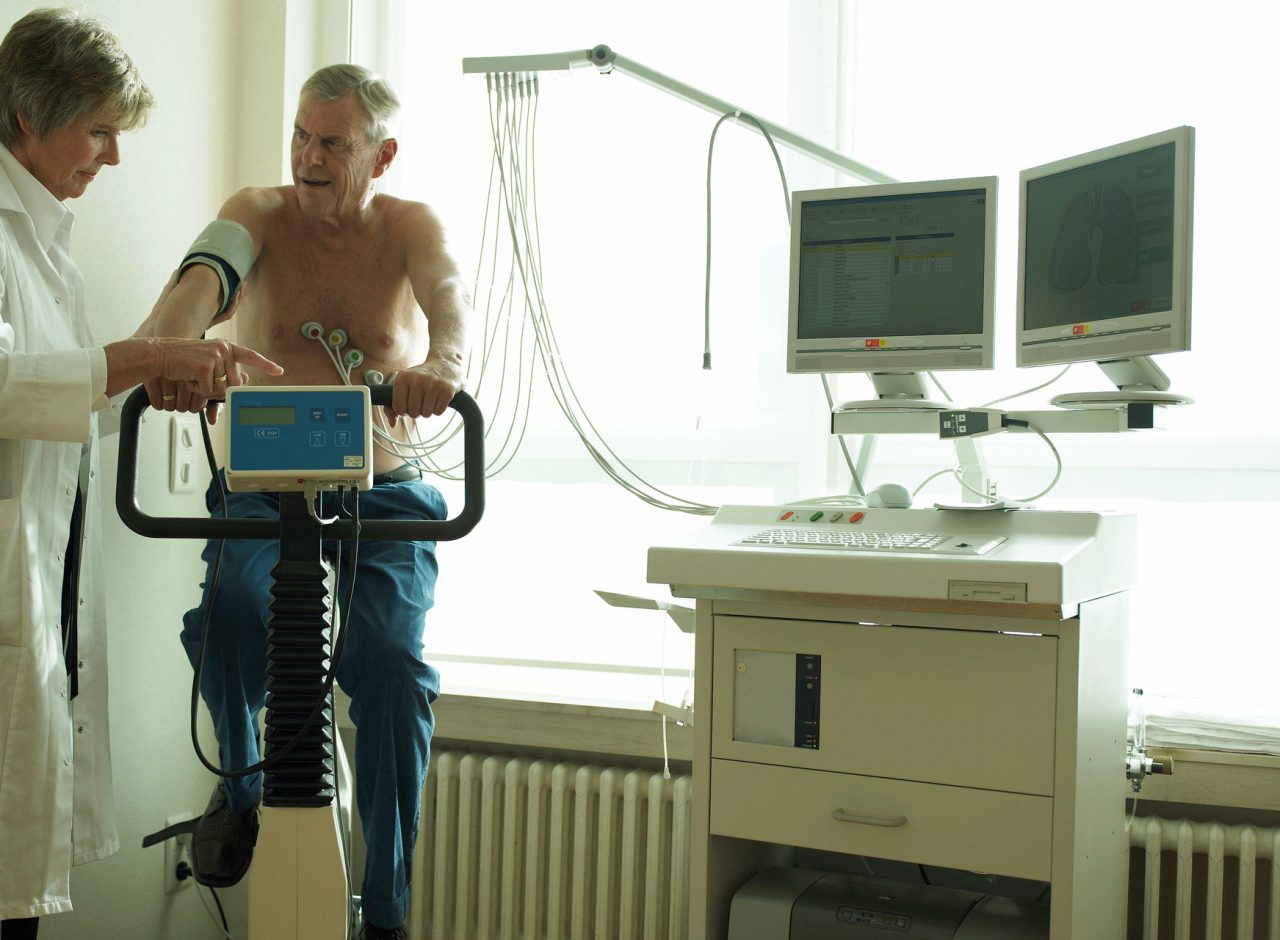What Is an EKG?

An EKG, or electrocardiogram, involves documenting the electrical system of your heart. An EKG provides information about heart rhythm, heart attacks, and more.
Sooner or later, almost everyone has an EKG (short for electrocardiogram). Sometimes called an ECG, this painless test may be part of a physical, or it can be performed because you are having specific symptoms likely related to your heart, including chest pain or skipped heartbeats. If you have a known cardiac condition, such as heart failure, your doctor may schedule you to be monitored from time to time with an EKG, too.
This simple-to-perform test reveals important information about your heart without being invasive in any way. So, you may wonder, what is an EKG doing, exactly?
YOU MIGHT ALSO LIKE: What Is Peripheral Artery Disease?
Understanding an EKG
A technician attaches small electrode patches (usually 12, but sometimes six) to skin on your chest, legs, and arms. The electrodes are connected by wires to a machine that records the electrical activity of your heart. The pattern is often printed out on paper for your doctor to examine, or it may be stored and viewed electronically.
The up and down zigzags on an EKG reading reveal how long it takes for an electrical wave to move from one part of your heart to another area. It also shows whether your heartbeat is too slow or fast, regular or irregular, and can record where in the heart any erratic beats are originating (if they occur during the test).
An EKG also shows signs of heart damage due to heart disease, especially signs of an ongoing or previous heart attack, the National Heart, Lung and Blood Institute explains. That’s why, if you are experiencing chest pain or any other symptoms of a possible heart attack, an EKG is usually the first test you’ll receive in an ER or while being transported in an ambulance.
There are different types of EKGs
An EKG may be recorded while you lie still on a table. You can also have electrodes attached and connected to an EKG machine while you undergo a stress test, usually walking and running on a treadmill, so your doctor can see how your heart performs when it is stressed.
If you have symptoms that come and go, you may be given a holter monitor to record EKG readings while you go about your everyday activities. This type of EKG is especially useful for catching an arrhythmia such as atrial fibrillation, a common abnormal heart rhythm that can come and, without treatment, raises the risk of stroke.
In the past, ambulatory EKG machines were mostly small box-like devices worn around your waist and attached to electrodes on your chest. They could be cumbersome and require removing wires connected to electrodes for bathing. Today’s cardiac event recorders are typically much smaller and easier to use. They store your ECG in memory in a small monitor, and you transfer the data via your phone to a receiving center or your doctor.
There are also symptom pager-sized cardiac event monitors you wear on your wrist or carry in a pocket or purse. The American Heart Association points out you simply place the monitor on your chest if you feel abnormal, skipped heartbeats, dizziness, or other possible heart-related symptoms, and activate a recording button. Small metal discs on the device work like electrodes and perform an EKG. Then the data is sent via your phone to your doctor’s office. If anything, worrisome or dangerous is spotted, you’ll be asked to see your doctor soon or, depending on what’s found, head to an ER.
How technology is changing EKGs
For some people with heart rhythm symptoms that come and go, technological advances that seem almost like something out of Star Trek are revolutionizing long-term EKG monitoring.
For example, there are tiny (usually smaller than a postage stamp) implantable loop recorders, placed just under the skin of your chest during a quick out-patient procedure. This type of heart-monitoring device records an EKG continuously for up to three years. The data is downloaded remotely and sent to your doctor at regular intervals; if anything worrisome is noted, your doctor’s office will contact you immediately.
EKGs now work with smartphones, too. “The next big thing for diagnosis is the wave of smartphone-based EKG monitors, which are replacing and changing the way arrhythmia specialists find abnormal heart rhythms,” explains Emory Heart Center cardiologist and heart rhythm expert Michael Lloyd, MD.
“Now people have the ability with their watches to record a medical-grade EKG at the time they have their symptoms with their phone and a widget (AliveCor's KardiaMobile smartphone app),” Lloyd explains.
“This wearable technology has been a huge change and, while it isn’t perfect yet, I think it’s going to be the wave of the future. Patients are going to have the ability to get their own data and send it to their doctor, instead of coming in and getting an old-fashioned EKG.”
Why you may need — or not need — an EKG
Depending on your age and health history, you may not need an EKG as part of a check-up, unless there is a specific reason your doctor thinks one is warranted due to any symptoms you may be experiencing.
Your doctor may also take into consideration your individual risk factors for heart disease (such as high cholesterol, type 2 diabetes, and being overweight).
Other factors that can warrant an EKG include:
- Unusual heart sounds heard through a stethoscope
- A personal or strong family history of heart disease
- Medications you take or a device, such as a pacemaker, that can affect your heart
- Whether you face major surgery that requires an EKG screening prior to the operation
- Electrolyte imbalance of minerals such as potassium, sodium, calcium, and magnesium
YOU MIGHT ALSO LIKE: What Is Arteriosclerosis (Atherosclerosis)?
Updated:
June 17, 2022
Reviewed By:
Janet O’Dell, RN